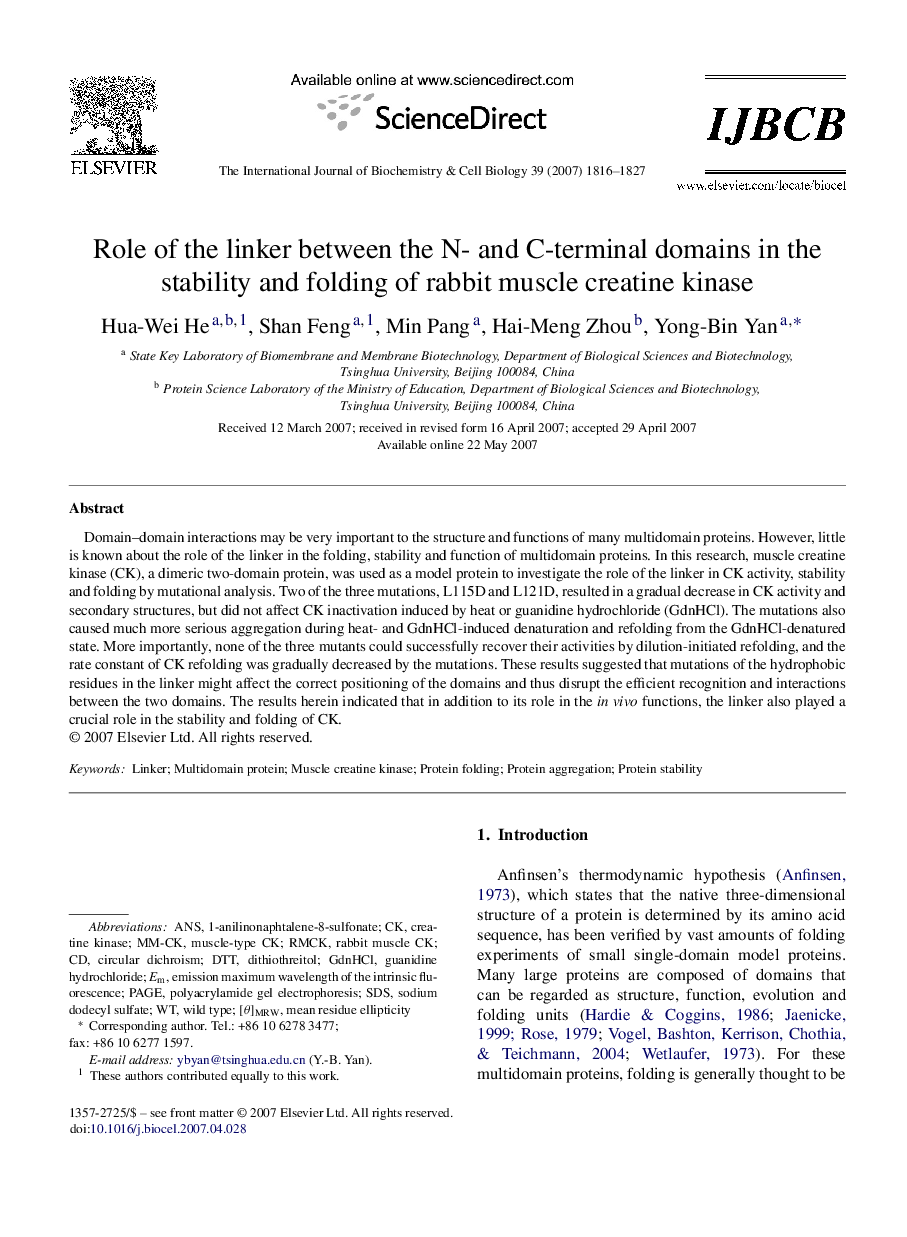| کد مقاله | کد نشریه | سال انتشار | مقاله انگلیسی | نسخه تمام متن |
|---|---|---|---|---|
| 1985402 | 1539971 | 2007 | 12 صفحه PDF | دانلود رایگان |
عنوان انگلیسی مقاله ISI
Role of the linker between the N- and C-terminal domains in the stability and folding of rabbit muscle creatine kinase
دانلود مقاله + سفارش ترجمه
دانلود مقاله ISI انگلیسی
رایگان برای ایرانیان
کلمات کلیدی
SDSDTTMM-CK1-anilinonaphtalene-8-sulfonateMultidomain proteinGdnHClPAGEpolyacrylamide gel electrophoresis - الکتروفورز ژل پلی آکریل آمیدProtein folding - تاشدگی پروتئینprotein aggregation - تجمع پروتئینdithiothreitol - دیتیوتریتولcircular dichroism - رنگ تابی دورانیANS - سالsodium dodecyl sulfate - سدیم دودسیل سولفاتmuscle creatine kinase - عضله کراتین کینازmean residue ellipticity - متوسط بیضوی باقی ماندهwild type - نوع وحشیProtein stability - پایداری پروتئینLinker - پیوند دهندهCreatine kinase - کراتین کینازGuanidine hydrochloride - گوانیدین هیدروکلراید
موضوعات مرتبط
علوم زیستی و بیوفناوری
بیوشیمی، ژنتیک و زیست شناسی مولکولی
زیست شیمی
پیش نمایش صفحه اول مقاله

چکیده انگلیسی
Domain-domain interactions may be very important to the structure and functions of many multidomain proteins. However, little is known about the role of the linker in the folding, stability and function of multidomain proteins. In this research, muscle creatine kinase (CK), a dimeric two-domain protein, was used as a model protein to investigate the role of the linker in CK activity, stability and folding by mutational analysis. Two of the three mutations, L115D and L121D, resulted in a gradual decrease in CK activity and secondary structures, but did not affect CK inactivation induced by heat or guanidine hydrochloride (GdnHCl). The mutations also caused much more serious aggregation during heat- and GdnHCl-induced denaturation and refolding from the GdnHCl-denatured state. More importantly, none of the three mutants could successfully recover their activities by dilution-initiated refolding, and the rate constant of CK refolding was gradually decreased by the mutations. These results suggested that mutations of the hydrophobic residues in the linker might affect the correct positioning of the domains and thus disrupt the efficient recognition and interactions between the two domains. The results herein indicated that in addition to its role in the in vivo functions, the linker also played a crucial role in the stability and folding of CK.
ناشر
Database: Elsevier - ScienceDirect (ساینس دایرکت)
Journal: The International Journal of Biochemistry & Cell Biology - Volume 39, Issue 10, 2007, Pages 1816-1827
Journal: The International Journal of Biochemistry & Cell Biology - Volume 39, Issue 10, 2007, Pages 1816-1827
نویسندگان
Hua-Wei He, Shan Feng, Min Pang, Hai-Meng Zhou, Yong-Bin Yan,